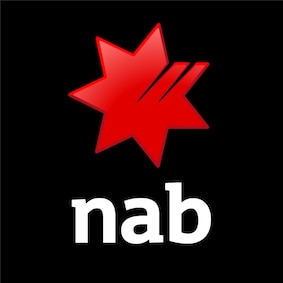Grow the market value of your business | Take action now - NAB
If you‘re planning to sell your business in the future, start taking action as soon as possible. You’ll need time to implement the changes that will improve the market value of your business and help you get the price you want.
Growth strategies
Thinking of selling your business in five to 10 years? It's worth checking the current value of your business today – before seeing what you can do to increase it over the next few years.
Here are 10 value-adding steps that you can consider well in advance of putting your business on the market.
1. Expand your market
A potential buyer will consider market viability. Therefore, ensure your market is growing or has the potential to grow. If you’re in a declining industry, you’ll either need to reverse this or look to expand into a growing industry.
Diversifying to gain a new revenue stream and increase cash flow will help raise the value of your business in the eyes of a buyer. This is important because a commercial viability analysis will be one of the first things a potential buyer will be interested in.
2. Change your market position
Consider your business model viability: is there enough of a market for the product or service you're offering? You may be able to grow by changing your market positioning, for example:
- A motel might be able to grow and attract a new clientele by becoming more upmarket and gradually improving its facilities, standards and therefore prices.
- A specialist engineering business could grow by appealing to a broader market and developing cheaper, mass-market versions of its best products under a different brand name.
3. Conduct regular market research
A potential buyer will have many questions to ask when acquiring a business; you can protect value by showing you know your market and regularly research possible change. This shows buyers your business is not standing still and can adapt to change.
Setting up processes to monitor the business climate and getting quality customer feedback on their changing needs will help you keep track of your market. Planning ahead to anticipate challenges will help you create a strong, consistent track record.
4. Develop your brand
A buyer will see significant value in buying an already established business with a respected brand. No matter how small, any business has the potential to differentiate itself from its competitors and become the market leader in a defined niche. To achieve this, you need a brand that captures the essence of your business.
A brand builds your market credibility over time and its reputation helps to sustain revenues as you grow.
What do your products or services offer that sets them apart from those of your competitors? This is your unique selling proposition and is the basis of successful branding. Conduct a brand review and take any necessary steps to enhance or re-invent your branding.
5. Form strategic alliances
Strategic alliances can be an important source of growth, particularly if you don’t have the skills and resources to exploit your opportunities. For example:
- Forming an alliance with a complementary business can help you tender for work that your business couldn’t normally deliver on its own.
- Working with a major distributor may be more effective than developing your own sales channels.
These actions could increase the market value of your business when it comes time to sell.
Management systems
6. Show growth potential
A potential buyer will be most interested in growing a new business, so aim to create a business that can be scaled up. For example, if you develop good business systems and operating manuals, you can show buyers that the business has the potential to:
- become a franchise
- expand into other geographical areas
- acquire smaller competitors.
7. Maintain physical assets
Maintaining assets helps to generate value. Failing to do so can see your assets decay beyond repair. Tangible assets such as machinery, equipment and property are relatively easy to register and protect through insurance and maintenance schedules.
If possible, try to own the core physical assets that you rely on for success. Owning your premises can provide both security and the potential for capital growth. Be sure to seek advice from your NAB business banker regarding asset finance, business loans and equipment leasing.
8. Protect intangible assets
It’s important to recognise and protect all the intangible assets that add value to your business. Once you start listing them you may discover there are even more of these assets than you realise.
Assets such as intellectual property (IP) can add both security and value. Review IP Australia to see what could be patented, copyrighted, design protected or trademarked.
Remember the less obvious assets too. For example, in a ‘knowledge’ business whose value largely reflects the skills of its employees, the business risks losing value if the employees leave or take intangible business assets with them, such as a copy of the customer database. Consider these steps:
- Protect your customer database and other key records by creating backup copies and keeping them off-site or in a fire safe. Your customer database is a significant source of value to a buyer, especially if you can show that you gain repeat business through it.
- Use passwords to limit employee access to sensitive or confidential information.
- Periodically check that you can successfully restore copied data.
9. Protect your property
Set up systems to minimise the risk of employees ‘owning’ some of the value in your business. For example, sales people may feel they own certain customer relationships. Include clauses in employment contracts to clarify ownership of any IP developed in the business, and to prevent former staff from competing with you.
10. Retain key staff
Dedicated and experienced staff can be a key asset in the eyes of a buyer. Key staff who have helped you create a valuable business are themselves an important part of that value.
To retain them, make sure you provide opportunities for career progression and use incentives to align pay with the value they create. Make your business an attractive place to work. Good working conditions and competitive wages will help to retain their skills.
Strengthen your team through selective recruitment and training. Look for staff who will create value for your business, and managers with transferable skills who can help you manage growth and achieve the best standards.
Clearly communicating your vision and strategy to staff will also help to motivate staff and gain their buy-in to value-adding goals.
Start planning
A potential buyer will conduct detailed due diligence when buying a business, so start planning to strengthen these 10 areas in your business now. Also take note of the steps that help to ‘distance’ you from your business. Buyers will see less value in a business too reliant on an owner. If this applies to your business, take steps to show that your business can stand alone.
Next steps
- Meet with staff to plan medium and long-term ways to add more value to your business.
- Meet twice yearly with staff and your advisers to discuss possible political, economic, technical and social changes.
- Lock in intellectual property to identify what you can protect.
- Create a realistic timeline of value-adding actions that you want to implement, and make a start.
- Talk to your NAB Business Banker about asset finance, business loans and equipment leasing.
- Find out more about selling your business.
Speak to us about your finance and lending needs. Request a call back or call us on 13 10 12.
Other business moments
Maximising your sale price: A guide to selling your business
Find out how to negotiate a better business purchase price.
Understanding and managing your cash flow
Learn how to understand your cash cycles and set cash goals.
How to use our sales forecast template
Help predict your future sales, overheads and profits.
Related products and services
NAB Business Overdraft
Manage peaks and troughs in your cash flow with an overdraft on your transaction account, starting from $20K.
Business credit cards
Earn rewards points and manage business expenses with our range of business credit cards.
Business loans
Manage your cash flow, purchase stock or inventory and grow your business with our wide range of business loans.
Get in touch
Contact us
Explore our business banking contact information and get support with a wide range of products, services and topics.
Visit a NAB branch
Our business bankers are located all around Australia.
Important information
Apologies but the Important Information section you are trying to view is not displaying properly at the moment. Please refresh the page or try again later.
The information contained in this article is intended to be of a general nature only. It has been prepared without taking into account any person’s objectives, financial situation or needs. Before acting on this information, NAB recommends that you consider whether it is appropriate for your circumstances. NAB recommends that you seek independent legal, financial and taxation advice before acting on any information in this article.





